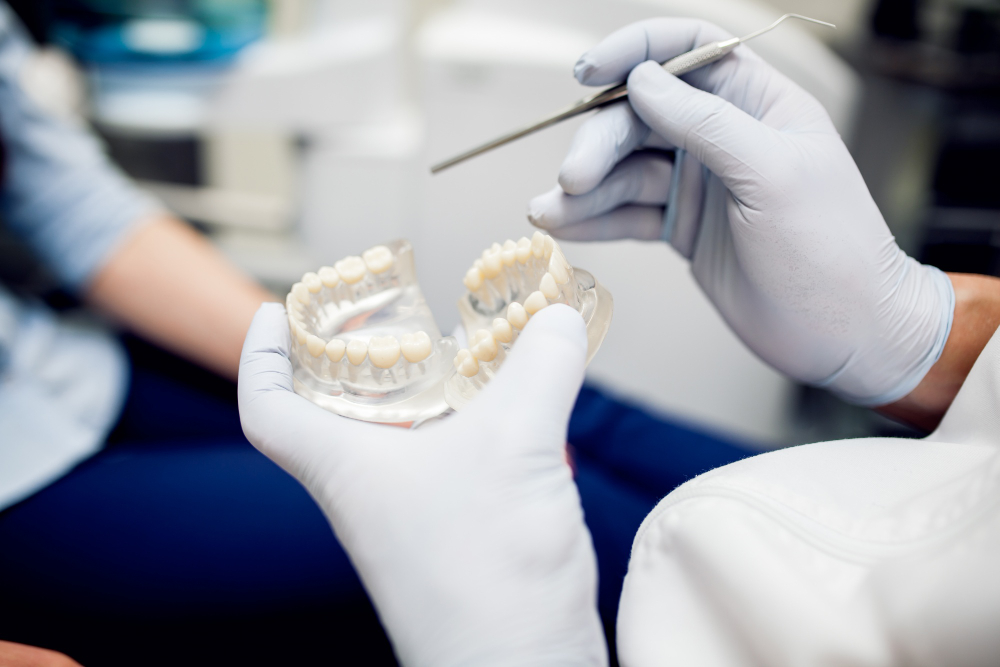A good smile automatically boosts your confidence and makes you feel good about yourself. For those, however, who have missing teeth, this can be a little embarrassing. Moreover, missing a tooth can also affect the way you speak or eat. Fortunately, restorative dental care can help repair these gaps with dental bridges.
If you are wondering about what a dental bridge is, this article is for you,
What is a Dental Bridge?
A dental bridge is a prosthetic tooth that is made of either porcelain, ceramic, or metal. It is used to fill the gaps caused by a missing tooth. This bridge is put in place by attaching it to the teeth on either side of the gap.
In restorative dentistry, this procedure is less invasive as it does not require surgery. Additionally, it also causes minimal pain and discomfort along with a quick healing process.
What are the Types of Dental Bridges?
Dental bridges are of the following types:
1. Implant Bridges:
In an implant bridge, rather than attaching the bridge to your surrounding teeth, an implant is used to secure the bridge to your jaw. This may be required if you have more than one missing tooth, or if surrounding teeth are unable to support the bridge.
2. Maryland Bridges:
In this type, the bridge is attached to an artificial tooth to the back of a nearby tooth. This method is preferred if the bridge is to be attached at the front of your mouth.
3. Cantilever Bridges:
If you only need to connect one tooth rather than two surrounding teeth, this implant may be used to connect the bridge.
Why Do You Need a Dental Bridge?
Missing teeth can cause extreme mouth or gum pain as it also causes surrounding teeth to shift. Since our teeth support lips, a missing tooth can cause lips to droop and alter the shape of your face. Due to this very reason, you may also experience pain.
You need to visit a dental clinic for restorative dental care to:
1. Improve speech.
2. Improve chewing.
3. Improve smile.
4. Relieve pain caused by an uneven bite.
5. Reduce signs of early aging including sagging lips and skin.
6. Improve self-confidence.
What is the Procedure for Dental Bridge?
The procedure to get a dental bridge involves the following:
1. Cleaning of surrounding teeth and the gap.
2. Administering a local anesthetic to relieve pain.
3. Shaping surrounding teeth so that the crown can be placed.
4. Taking a tooth impression.
5. Placing a temporary bridge until the custom bridge is manufactured.
6. Fitting a permanent bridge.
7. Cementing the bridge.
In addition to the above, your dentist may also schedule a few follow-up appointments to check your bite. In case your bridge is not fitting against other teeth, further alterations may be needed to even out things.
Up on getting a permanent bridge, you may feel a little different in your mouth. It may also make biting, chewing, and speaking difficult. It, however, is not permanent and gets better with time.
What is the After-care for Dental Bridge?
A dental bridge does not just imply a different smile, but also a changed oral hygiene routine. Your dentist will guide you on after-care to ensure longevity. Here are a few tips that can help you in maintaining your dental bridges:
1. Changing to a soft-bristled toothbrush as you do not want to scratch the bridge with hard bristles.
2. Twice-daily brushing and flossing preferably with a fluoride toothpaste.
3. Rinsing with an antiseptic mouthwash at least thrice a day.
4. Visiting the dentist on all of your follow-up appointments.
To Sum It Up
Missing teeth can be embarrassing but these can be treated with restorative dental treatments including dental bridges. These are safe, effective, and great ways of promoting your bone structure and bone health. If you wish to consult about dental bridges, you can visit us at Hopkins Family Dentistry or schedule an appointment with us here.





Comments